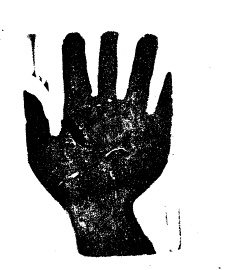Goals: A wage increase of 35 percent to cover ‘dearness’ (cost of living) for textile labourers. Or to reach agreement with the Mill Agents’ Group to settle the dispute through arbitration.
Success in achieving specific demands: 6 out of 6 points
Survival: 1 / 1
Growth: 3 / 3
A heavy monsoon season in 1917 destroyed agricultural crops and led to a plague epidemic claiming nearly 10 percent of the population of the city of Ahmedabad in the state of Gujarat. During the intense plague outbreak from August 1917 to January 1918, workers in textile mills in Ahmedabad were given ‘plague bonuses’ (some as much as 80 percent) in an attempt to dissuade them from fleeing.
However, when the employers announced their intent to discontinue the plague bonuses as the epidemic subsided in January 1918, workers demanded ‘dearness’ (cost of living) allowances of 50 percent of their wages on the July salaries.
Inflation caused by Britain’s involvement in the First World War had doubled the prices of foodgrains, cloth, and other necessities.
Striking workers were arbitrarily dismissed and mill owners resolved to start recruiting weavers from Bombay.
Frustrated mill workers turned to Anusuyya Sarabhai, a social worker who was also the sister of the president of the Ahmedabad mill owners’ association (founded in 1891), for help in fighting for economic justice. Anusuyya soon urged Mohandas Gandhi, who was respected by mill owners and workers, to intervene and help resolve the impasse between the workers and the employers.
Gandhi proposed an arbitration board comprised of three representatives from each side. Though both sides agreed to this arbitration and chose their representatives, the mill owners refused to take part in the first meeting when the labourers took strike action. The strike had been prompted by the labourers’ anticipation of a lockout in all the mills. Gandhi apologised to the mill owners for the ill timing of the strike.
Despite Gandhi’s readiness to correct the mistakes of his side and urge the mill owners to return to the arbitration process, the first attempt to use arbitration failed because of the distrust between the two sides. On 22 February 1918, mill owners staged a lockout and announced that they would only invite back in the mills the workers who accepted a 20 percent increase in wages. Some of the workers accepted this offer, but Gandhi urged the workers to stay firm in demanding economic justice.
After analysing the conditions of the textile industry, comparing the wages in Bombay, analysing the economic effects of Britain’s war, and observing the living conditions of the workers, Gandhi calculated a 35 percent increase in wages to be a just demand that the industry could also economically support.
Though the workers were persuaded to accept the new, moderated demand of 35 percent increase in wages, the employers did not make any concessions. Gandhi and the workers pledged to behave peacefully and not to return to work until their demand was met.
Daily public meetings and instructive leaflets reminded and educated the workers about the principles and significance of their struggle. In response, the mill owners issued counter-propaganda leaflets to try to diminish the workers’ morale in the strike. Gandhi shared stories of the Indians’ struggles against discrimination in South Africa to inspire the labourers in India. Songs and verses were composed daily by the workers (many of whom were illiterate) and attracted the attention of the local population.
Various welfare activities such as lessons on sanitation and medical assistance provided during the campaign influenced the creation of the Ahmedabad Textile Labour Association later in 1920. The workers also were employed in building a weaving school at the Gandhi ashram so that they could be self-sufficient during the strike. Some of the workers found the work such as carrying bricks to be demeaning and were beginning to lose patience and confidence.
Sensing the weakening morale of the labourers, based on the growing number of workers returning to the mills, Gandhi staged the first of his 17 ‘fasts unto death’ on 15 March 1918. On the third day of the fast, Ambalal Sarabhai, the president of the Ahmedabad mill owners’ association, offered to meet the workers’ demands as long as Gandhi agreed to keep away from the labourers ‘for all time in future.’
Gandhi rejected this offer, wanting to uphold the integrity of the struggle for economic justice. Instead, he offered a new settlement which proposed to settle the dispute by an impartial arbitrator, professor Anandshanker Dhruva, and to make compromises on the details of the settlement.
This proposal was accepted by the mill owners on 18 March 1918 with mutual satisfaction and Gandhi broke his fast. The mill owners even offered sweets to their workers as a gesture of appreciation and leaders from different sections of labour delivered speeches of gratitude.
The workers returned to work the following day, receiving 35 percent increase in wage on the first day, 20 percent the second day, and 27.5 percent (median percentage) for the remaining time until the arbitrator decided upon the fair amount of increase in wages.
The settlement also stated that if the arbitrator decided upon 20 percent, the amount that had been paid prior to this decision exceeding that amount of increase in wages would be refunded to the mill owners.
The arbitrator finally decided upon 35 percent seeing the mill factories’ increase (double to triple) their profits. This campaign for economic justice in the textile mills of Ahmedabad lasted 25 days adhering to Gandhi’s nonviolent satyagraha principles.
The establishment of the Ahmedabad Textile Labour Association had long-term effects in improving working conditions and leading labour union organisation in India.
Topics: Violence & nonviolence


